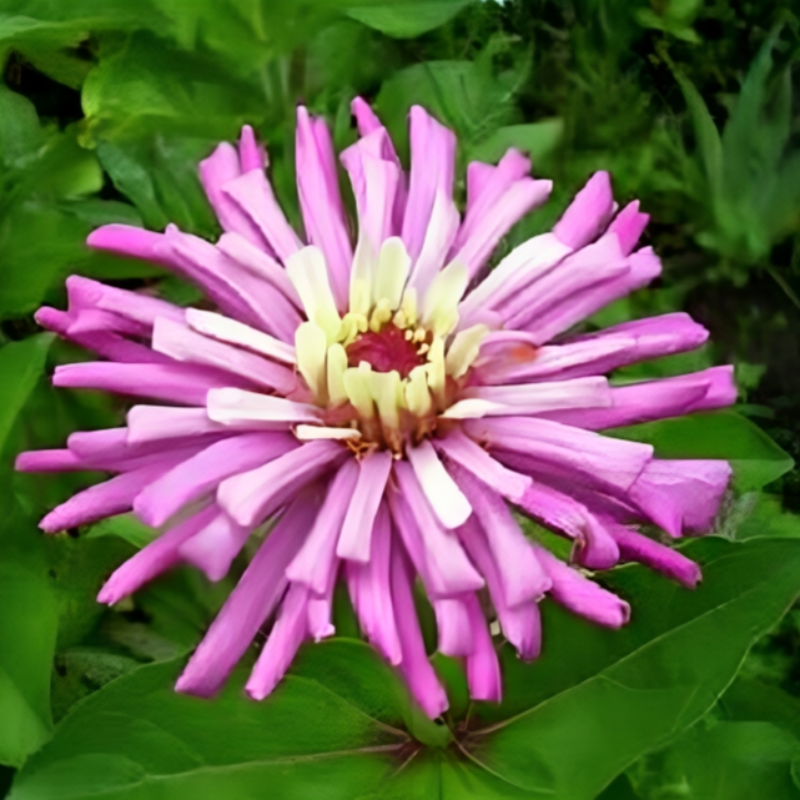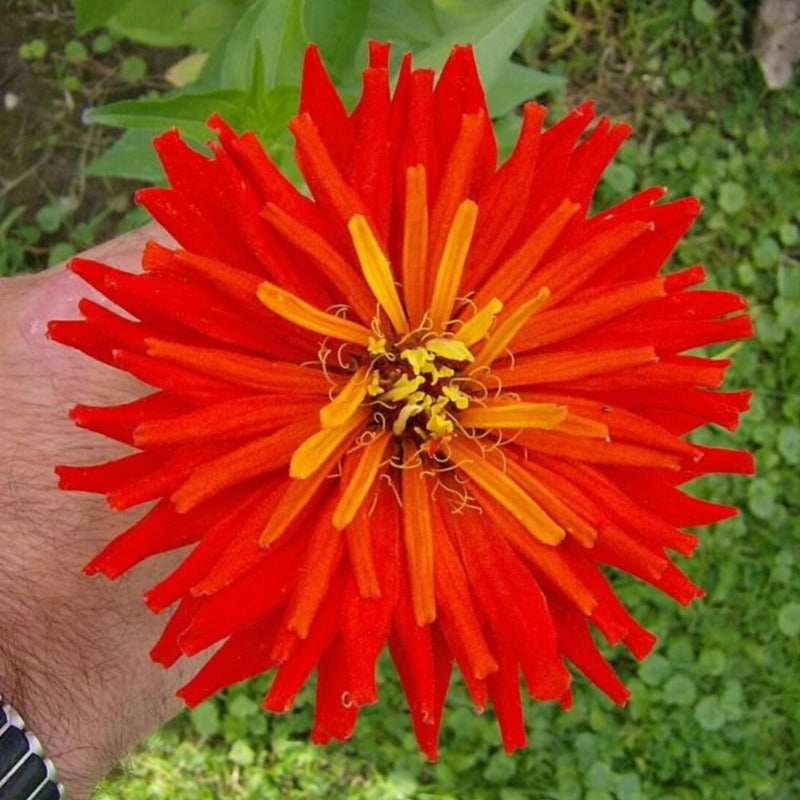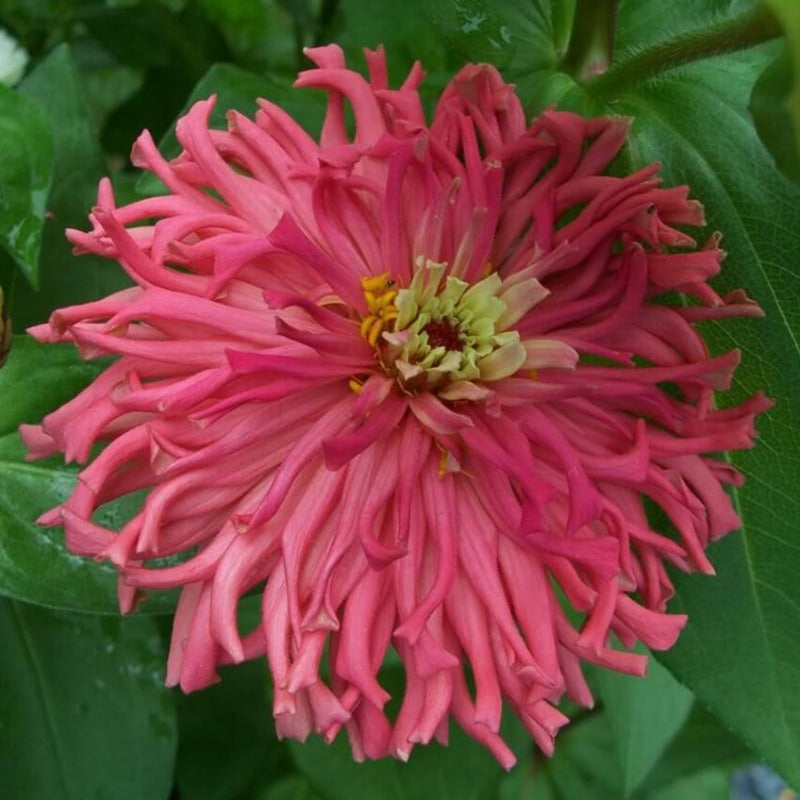- Historical context: Zinnias are named after the German botanist Johann Gottfried Zinn, who described the flower in the 18th century. The cactus-flowered variety is a more recent development, bred for its unique petal shape.
- Geographical origination: Zinnias are native to Mexico and the southwestern United States. The cactus-flowered variety was developed through selective breeding.
- Relevant cultural significance: Zinnias have been popular in gardens for centuries due to their vibrant colors and ease of growth. The cactus-flowered variety is particularly prized for its unique, spiky petals.
- Time period of discovery: The original zinnia species were discovered in the 18th century, but the cactus-flowered variety was developed in the 20th century.
- Original habitat: Zinnias thrive in warm, dry climates and are often found in meadows and grasslands.
- Notable historical uses: Zinnias have primarily been used for ornamental purposes in gardens and floral arrangements.
- Ideal temperature range: Zinnias prefer temperatures between 70-85°F (21-29°C).
- Soil type: Well-draining soil with a pH between 5.5 and 7.5 is ideal.
- Sunlight requirements: Full sun, at least 6-8 hours of direct sunlight per day.
- Watering needs: Moderate watering; keep the soil consistently moist but not waterlogged.
- Planting season: Plant zinnia seeds after the last frost in spring.
- Germination time: Seeds typically germinate within 5-7 days.
- Growth cycle duration: Zinnias bloom approximately 60-70 days after planting.
- Common pests and diseases: Aphids, spider mites, and powdery mildew are common issues. Regular monitoring and appropriate treatments can help manage these problems.
- Companion planting advice: Zinnias pair well with marigolds, cosmos, and sunflowers. They can also attract beneficial insects like bees and butterflies.
- Common challenges and solutions: Overwatering can lead to root rot. Ensure proper drainage and avoid overhead watering to prevent fungal diseases.
- Nutritional values: Zinnias are not typically consumed, so they do not have notable nutritional values.
- Health benefits: While not used medicinally, zinnias can improve mental well-being by enhancing garden aesthetics and providing a sense of accomplishment for gardeners.
- Culinary uses: Zinnias are not used in culinary applications.
- Medicinal uses: There are no significant medicinal uses for zinnias.
- Other unique advantages: Ornamental Value: Cactus-flowered zinnias are highly valued for their unique, spiky petals and vibrant colors, making them a standout in any garden or floral arrangement.
Pollinator Attraction: These flowers attract bees, butterflies, and other pollinators, which can benefit the overall health of a garden.










